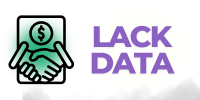What’s your experience with Facebook advertising for photography?
Facebook has long been a cornerstone for photographers looking to market their services, and its advertising platform, in particular, offers unparalleled opportunities to reach specific audiences. But what’s the actual experience like for photographers diving into Facebook ads? Is it a magical solution, or a complex beast demanding constant attention? Having navigated the intricacies of Facebook advertising for photography businesses, I can offer a nuanced perspective on its power and pitfalls.
The Initial Lure: Targeting and Reach
My initial foray into Facebook advertising for photography was driven by the promise of precise targeting. Unlike traditional advertising methods, Facebook allows you to narrow down your audience with remarkable accuracy. You can target based on demographics (age, gender, location), interests (photography, weddings, newborns, specific camera brands), behaviors (engaged shoppers, recent movers), and even custom audiences built from your own client lists or website visitors.
For a wedding photographer, this meant being able to show ads specifically to recently engaged couples in a particular geographic area, who had also expressed interest in wedding planning. For a portrait photographer, it meant reaching parents with young children in nearby towns. This level of specificity was, and still is, revolutionary. It meant less wasted ad spend and a higher likelihood of connecting with genuinely interested individuals.
Furthermore, the sheer scale of Facebook’s user base is undeniable. With billions of active users, the potential reach for your photography business is immense. Even with a highly niche service, you can still connect with a substantial number of potential clients who might otherwise never discover you.
The Learning Curve: From Boosts to Business Manager
While the initial appeal of Facebook ads is strong, the learning curve can be steep. Many photographers start with the seemingly simple “boost post” option, which, while easy, often yields limited results. My experience quickly taught me that true success lies within the more robust Facebook Ads Manager.
Navigating the Ads Manager can feel overwhelming at first. Understanding campaign objectives (awareness, traffic, lead generation, conversions), ad sets (targeting, budget, schedule), and individual ads (creative, copy, call to action) requires dedicated learning. I spent countless hours watching tutorials, reading articles, and experimenting with different settings. Early campaigns were often hit or miss, with some yielding promising leads and others feeling like money thrown into a digital void.
One of the most crucial lessons was the importance of the Facebook Pixel. This small piece of code, when installed on your website, tracks visitor activity and allows for powerful retargeting. My results significantly improved once I started using the Pixel to create custom audiences of people who had visited my website but hadn’t inquired, allowing me to serve them specific ads reminding them of my services.
The Creative Challenge: Standing Out in the Feed
Even with precise targeting and a good understanding of the Ads Manager, the creative aspect of Facebook advertising for photography presents its own unique challenges. The Facebook feed is a visually saturated environment. To capture attention, your ad creative needs to be exceptional.
This means more than just using a beautiful photograph. It involves thoughtful composition, compelling storytelling through imagery, and often, incorporating video. My most successful campaigns have utilized a mix of striking images and short, engaging video clips that showcase my personality and the experience of working with me.
Ad copy is equally vital. It needs to be concise, benefit-driven, and include a clear call to action. I learned that simply stating “I’m a photographer” isn’t enough. Instead, it’s about addressing client pain points (“Tired of blurry phone photos?”) and offering solutions (“Let me capture your family’s precious moments with professional clarity!”). A/B testing different headlines, body copy, and calls to action became a regular practice to optimize performance.
The Ongoing Commitment: Budgeting, Monitoring, and Optimization
Facebook advertising is not a set-it-and-forget-it endeavor. It demands ongoing commitment to budgeting, monitoring, and optimization. My experience has shown that consistent monitoring of ad performance is crucial. Daily checks on key metrics like click-through rates (CTR), cost per click (CPC), and return on ad spend (ROAS) are essential.
If an ad isn’t performing well, it’s important to identify why. Is the targeting too broad? Is the creative not resonating? Is the call to action unclear? This iterative process of analysis and adjustment is what truly separates successful campaigns from stagnant ones. I’ve often paused underperforming ads and launched new variations, sometimes with slight tweaks, sometimes with entirely new creative and copy, to find what resonates best with my target audience.
Budgeting is another critical aspect. It’s easy to overspend if you’re not careful. My approach evolved from setting a daily budget and letting it run to more strategic planning, allocating specific budgets to different campaign objectives and closely tracking the spend against the results. Understanding the lifetime value of a client also helps in determining a sustainable ad spend.
The Verdict: A Powerful, Yet Demanding Tool
My experience with Facebook advertising for photography has been overwhelmingly positive, despite the inherent complexities. It’s a powerful tool that, when wielded effectively, can significantly boost a photography business. It has allowed me to reach clients I wouldn’t have otherwise found, expand my client base, and ultimately grow my business.
However, it’s not a magic bullet. It requires dedication, continuous learning, and a willingness to experiment. Photographers who expect instant, effortless results are likely to be disappointed. But for those willing to invest the time and effort into understanding the platform, crafting compelling creatives, and consistently optimizing their campaigns, Facebook advertising can be an indispensable asset in their marketing arsenal. It’s a journey of continuous learning and adaptation, but one that, in my experience, has been well worth the effort.
